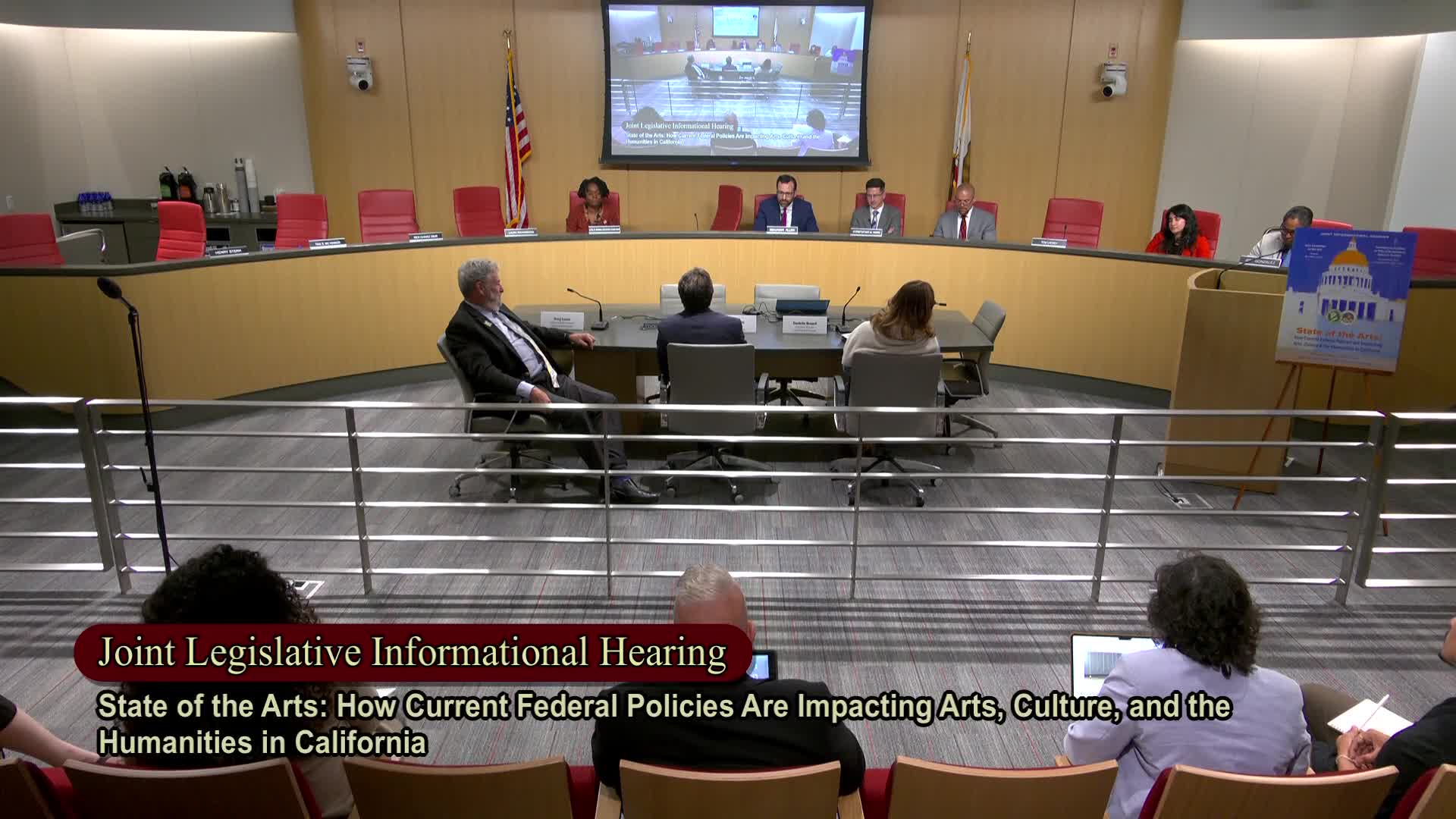Leslie Ito addresses grant cuts impacting Armory Center for the Arts in Pasadena
May 14, 2025 | California State Senate, Senate, Legislative, California
This article was created by AI summarizing key points discussed. AI makes mistakes, so for full details and context, please refer to the video of the full meeting. Please report any errors so we can fix them. Report an error »

California's arts community faces significant challenges as funding cuts threaten vital programs and initiatives. During a recent joint hearing of the Joint Committee on the Arts and the Assembly Arts, Entertainment, Sports, and Tourism Committee, Leslie Ito, executive director of the Armory Center for the Arts in Pasadena, highlighted the dire consequences of losing federal grants totaling approximately $410,000. These funds were crucial for supporting salaries, teaching artists, and various community-focused projects aimed at promoting equity and social justice.
Ito emphasized that the loss of these grants comes at a critical time when the arts sector is already grappling with the ongoing impacts of the COVID-19 pandemic, devastating wildfires, and shifting federal priorities. The terminated grants were intended to support innovative programs, including youth-led participatory research and environmental justice initiatives in collaboration with local schools and indigenous educators.
The implications of these funding cuts extend beyond financial loss; they threaten the livelihoods of staff, independent contractors, and artists involved in these programs. Ito noted that the cuts could affect seven full-time staff positions, ten independent contractors, and over 4,500 K-12 students, along with a broader audience of more than 72,000 people in the San Gabriel Valley.
The meeting also featured discussions on successful funding models from other states, particularly Minnesota, which has implemented a tax to support arts and humanities, generating $18 million annually for its Humanities Council. This model has sparked interest among California lawmakers as they seek sustainable funding solutions for the arts.
As the state grapples with these challenges, the need for robust support for the arts and humanities has never been clearer. The discussions at this hearing underscore the importance of advocating for funding that nurtures creativity, community engagement, and resilience in the face of adversity. Moving forward, stakeholders in California's arts community will need to rally support and explore innovative funding strategies to ensure the survival and growth of vital cultural programs.
Ito emphasized that the loss of these grants comes at a critical time when the arts sector is already grappling with the ongoing impacts of the COVID-19 pandemic, devastating wildfires, and shifting federal priorities. The terminated grants were intended to support innovative programs, including youth-led participatory research and environmental justice initiatives in collaboration with local schools and indigenous educators.
The implications of these funding cuts extend beyond financial loss; they threaten the livelihoods of staff, independent contractors, and artists involved in these programs. Ito noted that the cuts could affect seven full-time staff positions, ten independent contractors, and over 4,500 K-12 students, along with a broader audience of more than 72,000 people in the San Gabriel Valley.
The meeting also featured discussions on successful funding models from other states, particularly Minnesota, which has implemented a tax to support arts and humanities, generating $18 million annually for its Humanities Council. This model has sparked interest among California lawmakers as they seek sustainable funding solutions for the arts.
As the state grapples with these challenges, the need for robust support for the arts and humanities has never been clearer. The discussions at this hearing underscore the importance of advocating for funding that nurtures creativity, community engagement, and resilience in the face of adversity. Moving forward, stakeholders in California's arts community will need to rally support and explore innovative funding strategies to ensure the survival and growth of vital cultural programs.
View full meeting
This article is based on a recent meeting—watch the full video and explore the complete transcript for deeper insights into the discussion.
View full meeting
